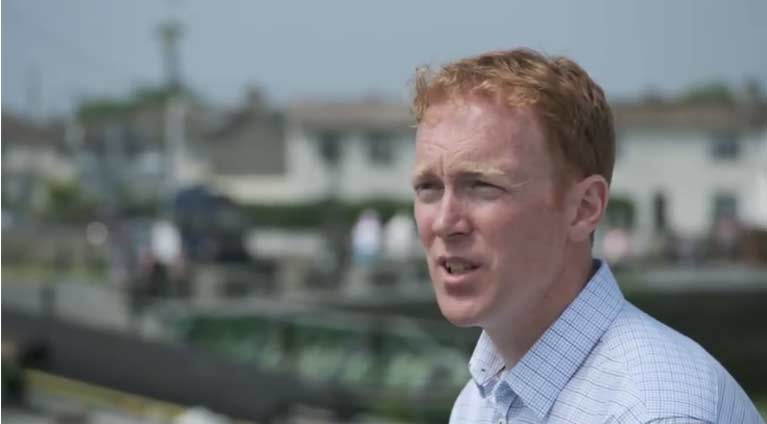NUI Galway’s Socio-Economic Marine Research Unit (SEMRU) has released a report that presents estimates of the value of domestic coastal and marine tourism in the Republic of Ireland.
While annual expenditure figures are produced for the overall domestic tourism market by the Central Statistics Office, information on marine and coastal specific domestic tourism activity is more difficult to obtain. According to the findings in this report the average expenditure per coastal day trip in 2018 was €95. The equivalent for coastal overnight trips was €310. Total expenditure by domestic tourists in coastal areas was estimated to be €698 million in 2018, which represents 35% of the total expenditure by domestic tourists that year. The marine related activity expenditure on overnight trips, or what might truly be referred to as domestic marine tourism, is estimated to have generated revenue of €381 million with €172 million of this being spent on water-based activities.
Dr Stephen Hynes, co-author of the report and Director of SEMRU based at the Whitaker Institute for Innovation and Societal Change at NUI Galway, said: “While the results presented in this report are from a time that precedes the current Covid 19 crisis they nevertheless highlight the economic contribution that domestic marine tourism and leisure activity makes under normal circumstances to coastal regions, particularly those regions outside the capital. Also, given that it is likely that the overseas tourism market will take much longer to recover, and Irish residents’ travel abroad will also be curtailed, the industry should be examining how they can maximise the return from the domestic tourism market this year and next.”

To generate information on domestic coastal and marine tourism in Ireland SEMRU carried out a household survey of residents in 2019, funded by the Marine Institute through its Marine Research Programme. As well as expenditure patterns the survey also examined participation rates amongst domestic residents in a variety of marine activities and where Irish residents went for overnight coastal visits in the reference year 2018. The survey consisted of face-to-face interviews with a representative sample of over a 1000 households.
Based on the results of the survey, 77% of respondents had actively engaged in marine related activities, on either day or overnight trips, during the year 2018. The most popular land-based coastal activities were walking/running along the coast/beach/cliffs/etc., beach or seaside trips, and coastal sightseeing. The most popular water-based activities were sea swimming, surfing, recreational boating of different types and sea angling. Significant differences in participation rates were observed across a number of socio-demographic classifications including age, social class and education attainment levels. The results also indicate that domestic tourists* undertake the majority of their marine activities on the West and South coasts of Ireland.
The report argues that given the observed differences in marine activity participation rates across the social classes, a worthy policy objective would be ensuring that all sections of society have the opportunity to access the well-being and mental health benefits that are known to come from interaction with the marine environment. Given the current crisis this is more important than ever. It also offers an opportunity to develop new marine tourism offerings focused on the expanding consumer demand for wellness services and products.
According to Dr Hynes consideration should be also be given by coastal tourism and leisure operators to the fact that marine active tourists have been shown to spend more and stay longer than the average tourist: “As we point out in the report, while the overseas market is often the main focus of the development agencies, the domestic marine tourism market offers significant opportunities for growth. Given the sector will, for the present, have to focus on the domestic side of the market in the short to medium term, now is the ideal opportunity to explore innovations in delivering new visitor experiences and marine tourism products aimed at the home market.”
The reported spatial pattern for domestic resident participation in marine related activities is also interesting from a marine spatial planning perspective. Unlike the overseas tourism market research carried out by SEMRU previously, where the majority of the marine activity undertaken was found to have been in the southern half of the western sea board, the distribution of marine activities undertaken was much more evenly spread out for the domestic tourism market.
Commenting on the report, Professor Alan Ahearne, Director of the Whitaker Institute at NUI Galway said: “The World Tourism Organization is forecasting that international tourist arrivals could plunge 60-80% this year because of the COVID-19 pandemic and may remain at depressed levels next year. Tourism in Ireland will be looking to domestic demand for recovery — and the evidence points to the huge potential for coastal and marine tourism to contribute to rebooting activity in this sector.”













